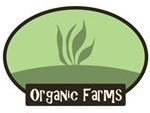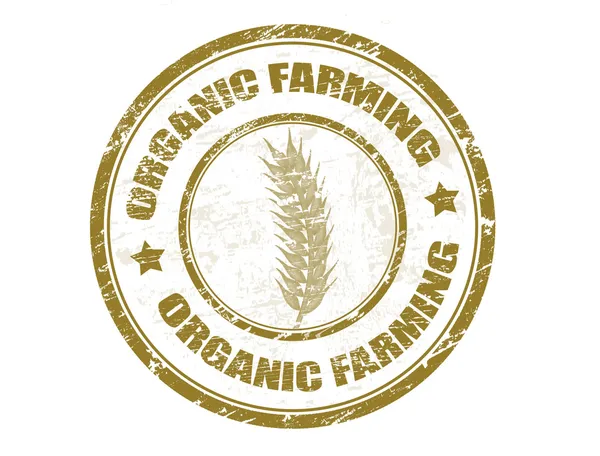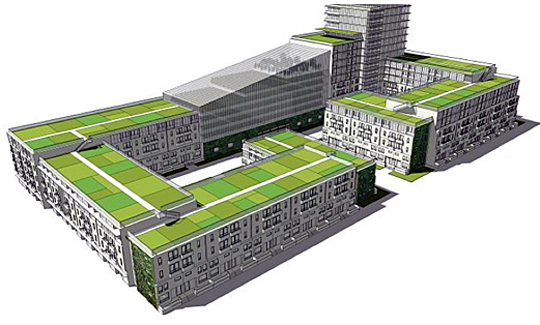PLANTS
credit to Endless Food SystemsNaturally, different plants grow under different conditions. Before you get started growing, it’s important to consider which type of growing bed to use. This is determined by the type of root structure that plant tends to have. Plants with no root structure need floating beds, while root vegetables grow better in wicking beds. Most everything else grows best in media beds.
For plants like lettuce, herbs or leafy greens, floating “raft” style beds are ideal. For root vegetables, wicking beds are a better choice. If you plan to grow tomatoes, peppers, beans or most other types of multiple yield plants, media beds are probably your best option.
Choosing the right environment in which to place your aquaponics farm is another important consideration. The amount of sunlight, ambient temperature, rainfall and wind are all crucial factors in producing a healthy plant. If you decide to grow outdoors, choose varieties of vegetables that will grow best in your climate. In addition, most areas will require the use of a greenhouse, or you can always grow indoors.
It is best to avoid fighting Mother Nature. Even with a greenhouse, it is difficult to control the temperature, and plants thrive better when the temperature ranges match their normal processes. Therefore, in the colder months you should grow cold-weather crops and in the summer, you should grow your warm-weather plants.
It’s important to carefully schedule your planting times. If you’re looking to produce a sustained food supply, you should stagger your projected harvests so that all of your produce doesn’t become ripe at one time. This can lead to wasted food, as well as in-between periods where your aquaponics garden isn’t producing any vegetables. If you plan to grow multiples of the same vegetable, try to stagger growing periods by approximately the amount of time it will take you to consume a batch.
If you are aiming for more variety in your diet, try overlapping the growing times of three or more vegetable types. It can take a while to fine-tune this process to match your own consumption and the decomposition rates of your already picked vegetables. To err on the side of overproduction is never a bad idea, as you can easily donate excess vegetables, share them with friends or preserve them for later by freezing, dehydrating or canning.
One of the quickest-yield vegetables you can get out of an aquaponics system is lettuce. Reaching peak maturity at around 28 days, lettuce grows ideally in floating beds. It is very forgiving in terms of the minimum and maximum water temperatures and can survive a range from 25-85 degrees Fahrenheit.
If you’re looking to produce a more nutritious food in a short amount of time, pole, an Italian-style wax bean, can be harvested in around 54 days. Pole grows best in a media bed and is optimal at temperatures between 59 and 95 degrees Fahrenheit. Beans overall are an excellent investment, as they can be dried and stored for very long periods of time.
Tomatoes are well worth the wait, taking around three months to reach peak maturity depending on the strain and variety. Like beans, they grow best in a media bed at a temperature of 59-95 degrees Fahrenheit. In order to ensure the highest yield from your tomato plants, be sure to trim off all shoots, leaving just the main vine. This will ensure that the bulk of the plant’s nutrients are delivered to the tomatoes once they begin to form.
In about 65 days, you can have a full harvest of delicious carrots. They have a very well defined optimal growing temperature, at between 59 and 64 degrees Fahrenheit, although they are capable of growing in extreme temperatures in both directions. Wicking beds provide the perfect growing environment for carrots and other root vegetables.
With an aquaponics system, your ability to grow edible plants is limited only by your own desire to do so. The system does most of the labor that would be required of you in an ordinary in-ground growing operation, so you can spend your time on more pressing issues like scheduling harvests and finding new and interesting applications for your crops. When done correctly, you should be able to maintain a constantly rotating supply of organic, pesticide-free vegetables that can carry on indefinitely in a properly maintained system.
FISH
credit to Backyard Aquaponics
There are many different species of fish that can be used in an aquaponic system, depending on your local climates and available supplies. Our local climate in Perth, Western Australia, allows us to keep Rainbow Trout through winter, then a warmer species like Barramundi during summer. There are also a few choices for year round fish that we could grow, but they often take a longer time to mature. If you live in a cooler climate you might be looking at growing Trout all year round, or perhaps another locally produced fish species. In warmer areas of Australia people generally grow Barramundi, or Jade Perch year round, in most warm areas throughout the world Tilapia is the fish of choice.
credit to Backyard Aquaponics
There are many different species of fish that can be used in an aquaponic system, depending on your local climates and available supplies. Our local climate in Perth, Western Australia, allows us to keep Rainbow Trout through winter, then a warmer species like Barramundi during summer. There are also a few choices for year round fish that we could grow, but they often take a longer time to mature. If you live in a cooler climate you might be looking at growing Trout all year round, or perhaps another locally produced fish species. In warmer areas of Australia people generally grow Barramundi, or Jade Perch year round, in most warm areas throughout the world Tilapia is the fish of choice.
In deciding what is the best species for you to grow, you should take a few factors into account, most importantly is what you want from your system. If you don’t want to eat your fish then you probably won’t want to grow edible fish, or you may want to grow an edible fish that can live year-round in your area, so that you’re not having to harvest fish out seasonally. The second most important factor is ‘What’s available?’ You need to be able to buy fish to stock your system, even with species such as Tilapia that breed readily, you need to get your broodstock in the first place.
Here’s a list of useful aquaponic species with a few details about each
Barramundi: Barramundi are often grown in aquaponic systems through the warmer months of the year. Most growers will buy fairly mature stock so that they can harvest larger fish, at the end of the growing season. Barramundi that is grown in an aquaponic system has an exceptionally clean, crisp taste. Growing your own Barramundi excites guests and is the envy of neighbours. They provide a decent harvest at the end of the season and are one of the more majestic species of edible fish.
Catfish: There are many different species of catfish around the world that are well suited to aquaponics. Channel catfish are the most widely farmed aquaculture species in the United States, and they are available in many areas of Australia. Catfish don’t have scales so they need to be skinned, they are quick growing and have a good food conversion ratio.
Carp: There are many species of carp that could be very well suited to aquaponics, unfortunately because of their reproductive capabilities, their tough nature and ability to readily adapt in many areas of the world, carp have become noxious pests to native waterways and the environment, and as such they are not easily obtainable, and often there are high fines and fees for keeping them. In most western cultures carp also have a fairly poor reputation, as an eating fish, however, carp is still the most widely cultured fish in the world as it’s grown throughout most of Asia.
Goldfish: Although some people may group these with the carp, I’ve decided to cover these seperately as most people refer to them as goldfish, and this is what they will be sold as, at local pet shops or fish suppliers. Goldfish are generally pretty tough and make a great addition to an aquaponic system. In many areas they will breed in a tank, although they generally need plant cover within the tank to breed.
Jade Perch: This Australian fish is worth a special mention here, as it has the highest levels of omega three oils of any fish species in the world. In fact it’s so high in omega three oils that growers are trying to breed the oil out of them, they are trying to breed a less oily fish because they’ve found people don’t like the high oil content. They require warm water and consume an omnivorous diet. Very well suited to an aquaponic system, they grow quickly and fingerlings are readily available in warmer areas.
Koi: Once again, another species of carp, but better known as “Koi” rather than carp. Koi are very common within many Asian communities and they are often found in large ornamental ponds. For those who love Koi, an aquaponic system is a great proposition for stocking the fish.
Murray cod: Murray cod are a magnificent native Australian fish, known to grow to enormous sizes in their native habitats, their tank culture is still in reasonably early days. Murray cod are grown in recirculating aquaculture systems, and can also been grown in aquaponic systems, hopefully this fish will be utilised more over time because they are quick growing, and a great eating fish. One of the downfalls is that they must be kept at high stocking densities, and kept well fed otherwise they cannibalise each other.
Silver perch: Silver perch are a good allround native Australian fish that grow well under a variety of conditions. Perch are omnivorous and will happily eat green scraps as well as Duckweed and Azolla. They grow within a wide temperature range, though they’re not as fast growing as many other fish, taking 12-18 months for fingerlings to grow to plate size.
Tilapia: The second most cultured fish in the world, and extremely popular in Aquaponics systems. They are an ideal species for aquaponics for many reasons. They are easy to breed, fast growing, withstand very poor water conditions, consume an omnivorous diet and are good eating. The only downfall for some people will be that Tilapia require warm water. If you live in a cool area you are far better off growing a fish species that will grow well in your temperature range, rather than trying to heat the water. Tilapia are also a declared pest in many areas.
Trout: Trout are a great fish for aquaponic systems where water temperatures are a little cooler. Trout prefer water temperatures between 10°C and 20°C. They have extremely fast growth rates and excellent food conversion ratios.
Others: There are other fish species which are quite suitable for aquaponics, that might be available in your local area. In Europe many different species of carp are grown, within the United States such species as Bluegill are often available, while in Australia we also have a number of other native species like Sleepy cod which would be suitable.
Other aquatic animals that can be incorporated into an aquaponic system are fresh water mussles, fresh water prawns, and fresh water crayfish. Mussles are a filter-feeder, and do a great job of helping to clean the water, they will happily grow in flooded grow beds, or can be incorporated into fish tanks. Crustaceans make a nice addition to an aquaponic system and there are a few different species available depending on your location and water temperatures.
For those in tropical areas there’s Redclaw, a fast growing Australian species, and for those in cooler areas there’s Yabbies or Marron.
Yabbies breed readily, given the right environment and the correct water temperature, as well as long daylight hours. They also grow fairly quickly, but they can be prone to fighting and cannibalism when stocked very densely.
.jpg)



.jpg)
.jpg)
.jpg)
















